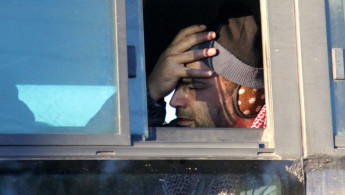Idlib: Syria's next battleground city?
The city and its eponymous province has been taking in rebels and their families evacuated from Aleppo, which is now almost under the complete control of forces loyal to the government.
Near the road linking Aleppo and Damascus, Idlib was home to nearly 120,000 people before the war began in 2011. Part of the population fled after rebels took it in March 2015, but about 100,000 displaced people joined it, according to the UN. Today it has some 200,000 inhabitants.
Before the war, the majority of its inhabitants worked in agriculture, mainly cotton and cereals, or commuted to Aleppo.
Idlib province is strategically important, lying close to the border with Turkey, which backs the rebels, and also near the coastal province of Latakia, home to Assad's clan and a regime stronghold.
On March 28, 2015, the Army of Conquest, a coalition of Islamist rebel groups such as Ahrar al-Sham and extremists from the al-Nusra Front, now known as Fateh al-Sham Front, seized the Sunni-majority city.
It was a serious setback for Assad because it was the second regional capital to fall after Raqqa, which became an Islamic State group [IS] stronghold.
On April 25, the coalition captured Jisr al-Shughur, one of the government's last outposts in the province.
Syrian warplanes, and later Russian jets after Russia intervened in September 2015, have repeatedly targeted cities and towns in Idlib province.
Next regime target?
A neighbour of Aleppo, Idlib province is also home to a large pool of rebel fighters, notably those who have recently arrived from areas which have fallen under regime control.
As early as December 2015, a security source in Damascus said Russian and Syrian forces have been holding joint training exercises in Latakia province to prepare for fighting in Idlib.
"In the next stage, Idlib will become the major destination and most important target of joint Russian-Syrian military operations," the source said.
On Thursday, UN envoy Staffan de Mistura warned that Idlib is now at risk of a similar escalation of violence as Aleppo.
"If there is no political agreement and a ceasefire, Idlib will become the next Aleppo," De Mistura said.
Fuaa and Kafraya
These are two Shia towns in Idlib province that have remained loyal to Assad and are besieged by mainly Sunni Islamist rebels.
Rebels have tried to use the two towns as bargaining chips in talks on Zabadani and Madaya, two predominantly Sunni towns surrounded by regime forces in Damascus province.
In December 2015, several hundred people were evacuated from pro-government towns and from Zabadani.
The evacuation from Aleppo on Friday was halted amid reports that the government and its ally Iran sought to add an evacuation of civilians from Fuaa and Kafraya to the terms of the Aleppo deal.
Ancient Ebla
Idlib province's site of Ebla, seat of one of ancient Syria's earliest kingdoms, is home to a famous collection of clay tablets dating back to 2400-2300 BC and discovered in 1964, which bear witness to the invention of the first alphabet.
But according to APSA, the association charged with protecting Syrian architecture, tunnels have been dug on the site, which has been looted, and it has been ravaged by fighting between army and rebels.



